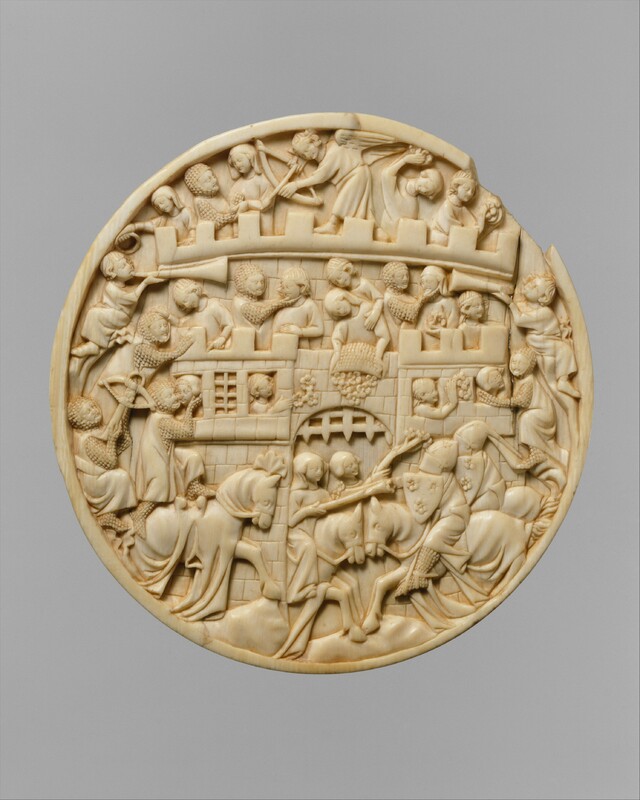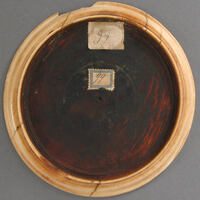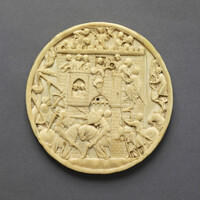Castle of Love ivories
Type:
Mirrors,
Sculptures
Date:
ca. 1320 to 1340
Location or Findspot (Modern-Day Country):
France
Medium:
Ivory
Dimensions:
Met Cloisters roundel: 14.1 × 1.2 cm,
Walters Art museum roundel (slightly ovoid): 13.2 × 12.7 × 1 cm
Description:
These two ivory roundels were carved in Paris between ca. 1320 and 1340. They were either the backs of mirrors or the tops of small boxes, intimate items often given by wealthy men to women as courtship or wedding gifts. Both depict a subject that appeared around 1300 and became very popular: knights attacking a Castle of Love defended by ladies. The knights' catapults and crossbows shoot harmless flowers, and the women respond by dropping roses, associated with love, on their attackers.
The representations shown here differ slightly in their details. In both, the winged god of love perches atop a crenellated castle, but only in the Met Cloisters piece does he actively shoot an arrow. In the Walters Art Museum example, a suitor climbs a ladder and is rewarded by meeting his beloved; in the Cloisters ivory, many knights have already penetrated the castle. The trumpeters shown here may be announcing a joust, which is depicted alongside the Castle of Love on several ivory caskets. The castle is a metaphor for women's bodies, and there is no doubt that it will fall.
The representations shown here differ slightly in their details. In both, the winged god of love perches atop a crenellated castle, but only in the Met Cloisters piece does he actively shoot an arrow. In the Walters Art Museum example, a suitor climbs a ladder and is rewarded by meeting his beloved; in the Cloisters ivory, many knights have already penetrated the castle. The trumpeters shown here may be announcing a joust, which is depicted alongside the Castle of Love on several ivory caskets. The castle is a metaphor for women's bodies, and there is no doubt that it will fall.
Relevant Textbook Chapter(s):
9
Repository and Online Resources:
• See the Met Cloisters ivory (2003.131.1) on their website.
• See the Walters Art Museum ivory (WAG 71.169) on their website.
• Read about another Castle of Love ivory at the Victoria & Albert Museum, London.
Image Credits:
Metropolitan Museum of Art; Walters Art Museum



